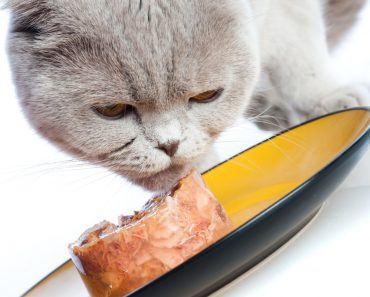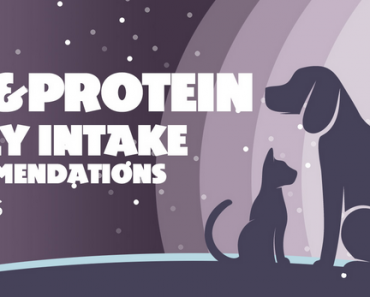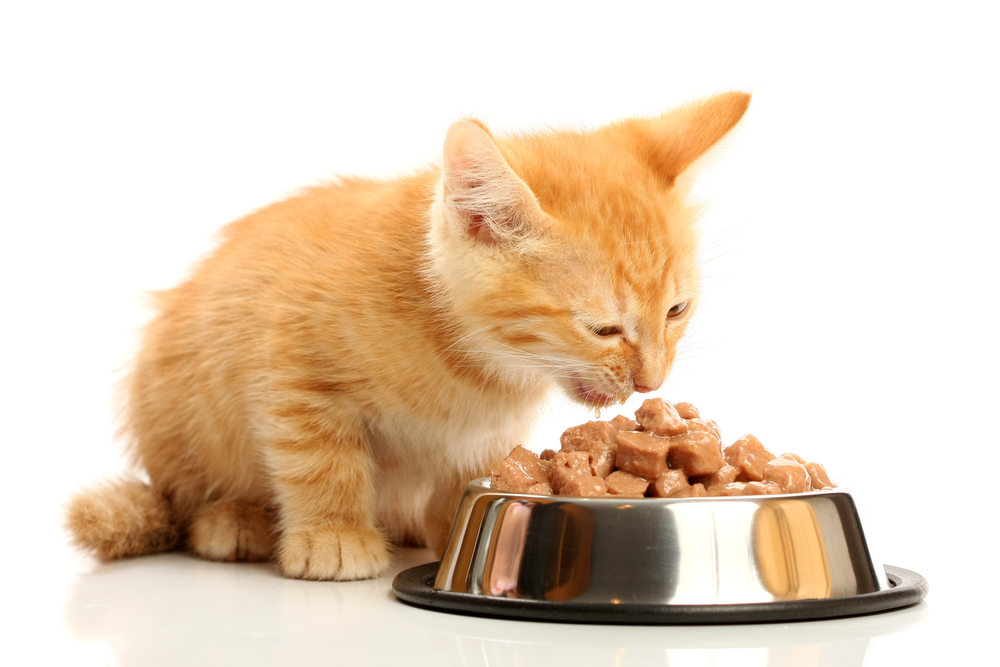 Nowadays a cat owner barely knows which cat food is the best for their own darling, since opinions of other owners and even renowned experts diverge greatly. It is obvious that the mouse is still the ideal source of food, with its own stomach contents, sinews, bones and everything. It comes as no surprise that many cat owners have adopted the so-called BARF diet. Many others recommend feeding raw food for many reasons and tend towards industrially produced brands. Mainly because many supplements have to be added when feeding raw food, which may lead to nutritional deficits because of wrong contents. These deficits can lead to dangerous consequences, even endangering the cats’ health.
Nowadays a cat owner barely knows which cat food is the best for their own darling, since opinions of other owners and even renowned experts diverge greatly. It is obvious that the mouse is still the ideal source of food, with its own stomach contents, sinews, bones and everything. It comes as no surprise that many cat owners have adopted the so-called BARF diet. Many others recommend feeding raw food for many reasons and tend towards industrially produced brands. Mainly because many supplements have to be added when feeding raw food, which may lead to nutritional deficits because of wrong contents. These deficits can lead to dangerous consequences, even endangering the cats’ health.
Most veterinarians lean towards a combination of dry and canned food, so that the advantages of both kinds can be enjoyed. With the many available brands it is not easy to choose the right one for your cat, so we will show you in this article what you need to look out for in dry food according to veterinarians and what contents in canned food may be damaging to your cat.
Advantages of canned food for cats
Canned food has many clear advantages, so it comes as no surprise that veterinarians advice to use it either as a complete food or combine it with dry cat food.
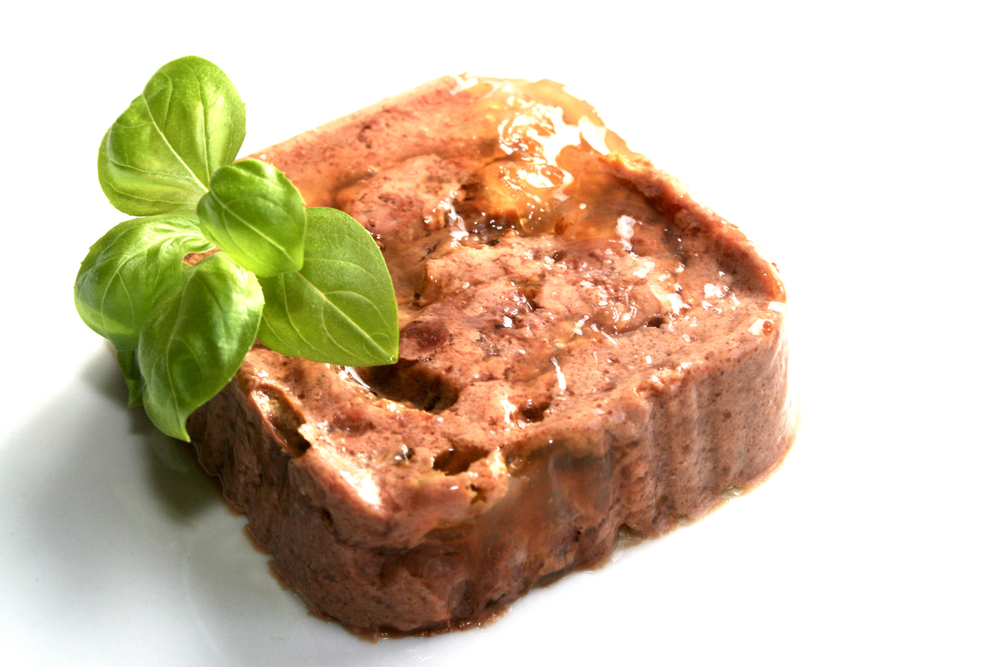 Canned food for cats contains a high amount of moisture. This is especially advantageous for cats who do not drink a lot and thus have a higher need for water. Most brands contain up to 80% water, which leads to almost completely satisfying the need of a cat who moves very little. As the owner, you almost don’t need to worry about the cat’s water intake anymore. Unfortunately, cats are known to drink very little. As animals who are prone to get urinary stones, regularly suffer from constipation or kidney disease, canned food is the ideal nutrition and can lessen these symptoms.
Canned food for cats contains a high amount of moisture. This is especially advantageous for cats who do not drink a lot and thus have a higher need for water. Most brands contain up to 80% water, which leads to almost completely satisfying the need of a cat who moves very little. As the owner, you almost don’t need to worry about the cat’s water intake anymore. Unfortunately, cats are known to drink very little. As animals who are prone to get urinary stones, regularly suffer from constipation or kidney disease, canned food is the ideal nutrition and can lessen these symptoms.
In addition, most cats prefer canned over dry food. Thus, canned food is ideal if you are the owner of a very picky cat who refuses to eat many other brands. The water helps the food’s aromas to develop, which leads to a better and more intense taste than dry food. Additionally, the typical canned food contains more protein than other cat food, which cats perceive as positive and tasty.
Canned food has a long shelf life. It is not rare for unopened cans to not expire until up to two years, and the food stays fresh, tasty and healthy too.
Thanks to the high amount of water in the food, the calories become diluted. This leads to the food’s ability to help avoid overweight. There are of course also special brands for already overweight cats.
Overview of advantages:
- high amount of moisture
- covers a large portion of the need for water
- cats like it better
- especially long shelf life in closed cans
- calories are diluted – overweight may be prevented
- easy to ration
- wide choice of different brands
- easy to store
What do you need to look out for when buying canned food for cats?
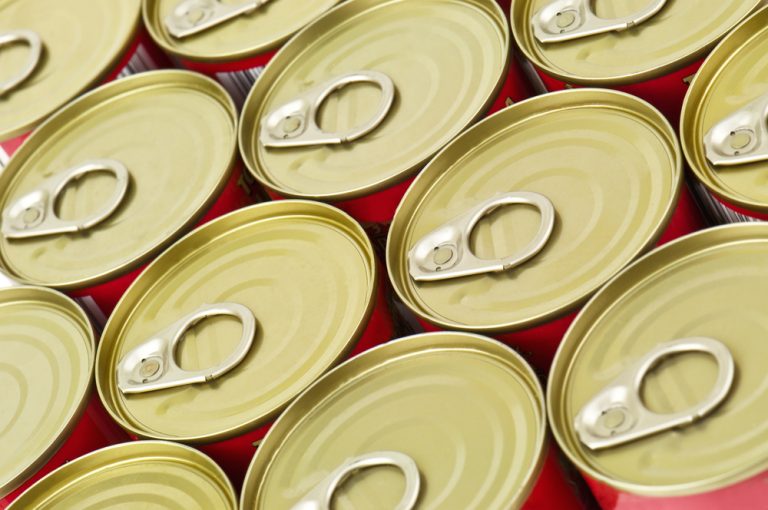
You should not buy just any food or just look at its price. The food’s quality plays an important role. It should meet your cat’s needs and requirements, be healthy and free of any additives which could strain your cat unnecessarily.
Sugar
Lots of canned foods are unfortunately rich in sugars. However sugar is not a sweet taste to cats at all. It only serves to make the food look tasty – not for the cat but solely for the owner. In addition, sugar is unhealthy, fattens the cat and may cause tooth decay. For this reason it is advisable to avoid cat food that contains sugar.
Animal by-products
Only the fewest of cat owners think about what it means when the can contains the label “animal by-products”. This does not mean it contains high-quality meat. In contrast, often these contain low-quality offal (slaughtered waste), hard to digest for any cat. Examples are fur, urine and other waste which cats normally would not eat. Other canned foods list their by-products in detail – not all are bad. Liver, heart and stomach are also part of this subcategory and are healthy for your cat. Some brands have labels that do not just say “meat and other animal by-products (4% rabbit, among others)” but “90% rabbit (90% muscle tissue, 5% heart, 5% stomach)”.
Vegetable by-products
Next to animal by-products, there are also vegetable by-products. These are not fit at all for canned cat food. Mainly they contain cheap soy as well as grain waste. As a matter of fact, the natural diet of a cat does not contain these at all, because cats do not eat carbohydrates in order to meet their energy requirements, but rather proteins. Another fact is that a cat’s stomach is just not long enough to unlock the long-chained carbohydrates, so they cannot be completely digested. For this reason it is necessary to keep the carbohydrate amount in cat food, no matter whether it is dry or canned, as low as possible. Vegetable material also is responsible for unnecessary strain on the cat’s organs, which in the worst case may lead to premature aging of the organs and an early death by kidney failure, caused by a deficient nutrition.

Ingredients of canned food
Looking at the ingredients of canned food, you can easily determine if it is high-quality or not. We will list some examples:
| Ingredient | Important to know |
| Raw protein
|
|
| Fat |
|
| Crude ash
|
|
| Crude fibers
|
|
| Moisture |
|
Minerals, supplements and vitamins – what should canned cat food contain?
Canned food should contain:
Taurine: Taurine plays an important role for your cat’s metabolism and strengthens their eyes and heart. Taurine is contained in meat as well as the entrails. Veterinarians are not sure which amounts are advisable though, opinions vary from 400 – 2500mg per kilo cat food.
Vitamins: Of course vitamins are especially important and are contained in meat as well as the entrails. These may be destroyed during production however.
Calcium and phosphates: Calcium and phosphates are important for bone growth and cat’s kidneys. These should be contained in a 1.2 – 1 ratio (calcium 1.2 – phosphates 1).
Potassium and sodium: These are also very important and should be contained in all canned food brands. The ideal ratio is 2.1 potassium to 1 sodium.
Canned food should not contain:
Sugars and flavor enhancers: Flavor enhancers are used to make the cat ignore the food’s low quality. Some cheap brands do this. Sugar additionally causes tooth decay and overweight. If it is a high quality food with high amounts of meat, no further flavor enhancers are needed.
Coloring agents: High quality cat food does not need coloring agents, which are mainly responsible to make the food look better and more tasty – not for the cat but rather its owner.
Gelling agents: These are responsible to bind the meat juice, so a sauce or tasty jelly is formed. Unfortunately food additives or starchy materials are often used, which may be bad for your cat.
Preservatives: Responsible for a longer shelf life. Especially artificial preservatives should be avoided, like potassium sorbate, also known as E303. Natural antioxidants like citric acid are not as bad.
Conclusion:
If you ask ten different veterinarians for their opinion on a good canned cat food, you will probably get ten different answers. However this is mainly because many veterinarians are not especially trained in recommending special cat foods or take part in special lectures of a cat food brand who want to sell their product. So it is important for you as a cat owner to look out for the ingredients by yourself and choose a brand which lists all of them, and not just some. Good cat food does not need to conceal any of their ingredients or keep them in secret. High quality food is not only tasty for your cat but also provides it with all important nutrients that it needs for a healthy life.
Fotocredits: © 6493866629 – shutterstock.com // © Bildagentur Zoonar GmbH – shutterstock.com // © Vova Shevchuk – shutterstock.com

